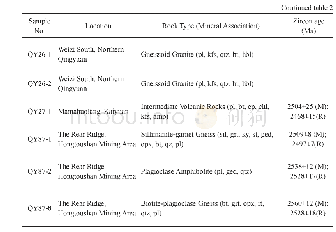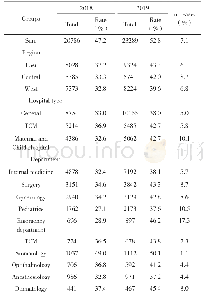《Table 2 The cooling types, coiling temperatures, and cooling rates of the samples》
 提示:宽带有限、当前游客访问压缩模式
提示:宽带有限、当前游客访问压缩模式
本系列图表出处文件名:随高清版一同展现
《The effect of cooling rate and coiling temperature on the microstructure and mechanical properties of a plain carbon steel》
The material w as produced by a 50 kg vacuum induction furnace and cast into a small ingot follow ed by forged and cut into 25 mm×200 mm×200mm square billets.The chemical composition is listed in Table 1.These billets w ere heated to1 100℃,held for 1 h,and then rolled to 8 mm thick flats through three rolling passes on the laboratory rolling mill w ith opening and finish rolling temperatures of 1 020 and 850℃,respectively.After rolling,separate flats w ere cooled to580℃through three different cooling processes,IC,LC,and UFC,and then held in the furnace for1 h to simulate the coiling process before final air cooling to room temperature.In addition,to analyze and compare the influence of different coiling temperatures on microstructure and properties in the case of same UFC process,the specimen w as cooled to 500℃through UFC and held for 1 h follow ed by air cooling to room temperature.The finish rolling temperature,cooling type,coiling temperature and cooling rate of the samples are show n in Table 2,and the final metallographic specimens w ere made from the room temperature samples.After grinding,polishing,and corrosion in 4%Nital solution,the microstructure w as observed and determined using a ZEISS optical microscope.
| 图表编号 | XD004631900 严禁用于非法目的 |
|---|---|
| 绘制时间 | 2018.03.30 |
| 作者 | ZHANG Chen、HU Xiaoping、LIU Gang、WANG Huanrong |
| 绘制单位 | Research Institute,Baoshan Iron & Steel Co.,Ltd.、Research Institute,Baoshan Iron & Steel Co.,Ltd.、Research Institute,Baoshan Iron & Steel Co.,Ltd.、Research Institute,Baoshan Iron & Steel Co.,Ltd. |
| 更多格式 | 高清、无水印(增值服务) |
查看“Table 2 The cooling types, coiling temperatures, and cooling rates of the samples”的人还看了
-

- Table 2 Locations, Rock Type, mineral associations and Zircon age of the samples from the Qingyuan Complex in northern L
-

- Table 2 Locations, Rock Type, mineral associations and Zircon age of the samples from the Qingyuan Complex in northern L





